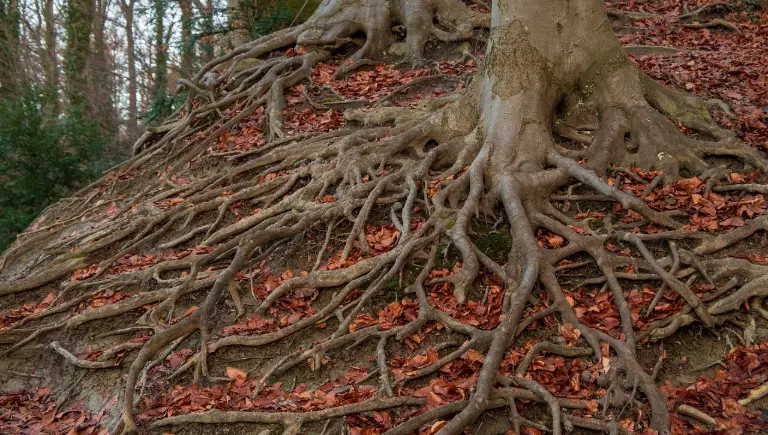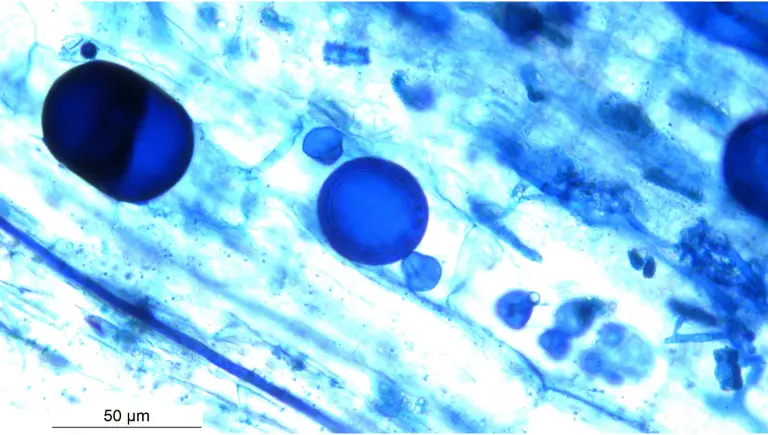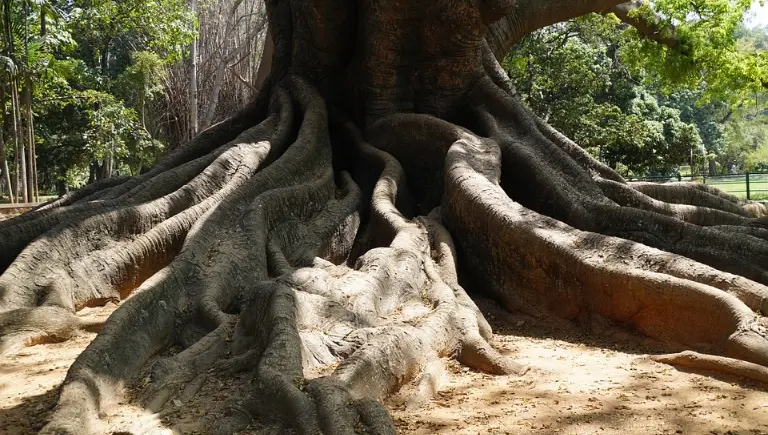Unveiling the Forest’s Mystery: How Trees Communicate Beneath Our Feet
Imagine hiking through a forest. You spot a tree that looks sick. Its leaves are droopy. But nearby, the other trees seem fine. What if I told you they are connected? What if they can help each other? It’s true! Trees talk. They share.
They even protect each other using vast underground networks. These networks allow trees to communicate, share resources, and defend themselves. It’s like a hidden internet beneath our feet!
The Wood Wide Web: Unveiling Mycorrhizal Networks
Did you know that trees aren’t alone? They have helpers. These helpers are fungi. Fungi connect to the roots of trees. This connection creates a network. This network is called a mycorrhizal network. It’s like an internet for trees. They call it the “wood wide web”!

What are Mycorrhizae?
Mycorrhizae are the symbiotic association between a fungus and the roots of a plant. “Myco” means fungus, and “rhiza” means root. Think of it as a marriage between a tree and a fungus. There are different types of mycorrhizae.
The two main types are ectomycorrhizae and arbuscular mycorrhizae. Ectomycorrhizae form a sheath around the root. Arbuscular mycorrhizae penetrate the root cells. These fungi have tiny threads called hyphae. Hyphae act like wires. They connect trees. They move water and nutrients around the forest.
🔹 Info Box
Mycorrhizae are tiny fungi that attach to tree roots. In return for sugar from the tree, the fungi help absorb water and nutrients. They’re like Wi-Fi routers connecting trees in the forest!

The Symbiotic Partnership: Trees and Fungi
This partnership is a win-win. Trees give fungi sugars. Sugars are food for the fungi. Fungi give trees water and nutrients. These nutrients, like nitrogen and phosphorus, help the trees grow big and strong. It’s a fair trade. Both benefit from this underground friendship.
How Trees "Talk": Decoding the Signals
Trees don’t shout. They don’t use cell phones. But they still talk. They use different ways to send messages through the “wood wide web”. It is quite remarkable.
Chemical Signals: The Language of the Forest
Trees use chemicals to send warnings. These chemicals are called volatile organic compounds (VOCs). When bugs attack, a tree releases VOCs. These VOCs float through the air.
Nearby trees “smell” the danger. They prepare their defenses. They might make their leaves taste bad. They might produce toxins to kill the bugs. It’s like sending a text message: “Danger! Bugs attacking!”
Electrical Impulses: A Rapid Response System
Trees can also send electrical signals. These signals travel through the mycorrhizal network. It is much faster than chemical signals. Think of it as the tree’s nervous system. When one tree is hurt, it sends a jolt of electricity. This warns the other trees in the network. They get ready for trouble fast.
📌 Quick Fact
Trees send electrical signals at about 1 cm per second through their cells — just like a slow nervous system!
Nutrient Exchange: Sharing Resources
Old, big trees can help young, small trees. They share nutrients through the network. These big trees are called “mother trees”. They send carbon, a source of energy, to the little trees. This helps the seedlings grow. It’s like giving them a boost. It is especially important in shady spots. It’s how the forest takes care of its young.
The Role of Mother Trees: Nurturing the Forest Community
Mother trees are the wise elders of the forest. Learn more from the Mother Tree Project by Dr. Suzanne Simard. They are the biggest and oldest trees. They are central hubs in the mycorrhizal network. They support the whole forest community. They are essential for keeping the forest healthy.

Identifying Mother Trees: Characteristics and Behaviors
Mother trees are often the largest in the area. They have many connections to other trees. Scientists can track the flow of nutrients. They use special isotopes to find these hubs. Mother trees share more than just nutrients. They also share information. They help other trees resist disease. They recognize their own kin. Mother trees favor their offspring, providing them with more resources.
💡 Did You Know?
Trees can recognize their own children. Mother trees send more nutrients to their kin than to unrelated seedlings.
Supporting Future Generations: The Legacy of Mother Trees
Mother trees are essential for the future of the forest. They help seedlings survive. They create a stable environment. They make the forest strong and resilient. When a mother tree dies, it even releases its stored nutrients. This nourishes the surrounding trees and seedlings. It’s like a final gift to the forest.
Threats to the Network: Disrupting Forest Communication
The wood wide web is fragile. It is threatened by human activities. Damage to the network harms the whole forest. We need to protect it.
Deforestation and Habitat Loss: Severing Connections
When we cut down forests, we destroy the mycorrhizal networks. Trees become isolated. They can no longer communicate. They can’t share resources. The forest becomes weaker. Deforestation breaks the connections that hold the forest together.

Soil Degradation and Pollution: Damaging the Infrastructure
Soil is the foundation of the wood wide web. Pollution and poor soil management damage fungi. This hurts their ability to connect with trees. Chemicals can poison the fungi. Compacted soil prevents them from growing. Healthy soil is key to a healthy forest.
Protecting the Wood Wide Web: Actionable Steps
We can help protect these underground networks. It is important to keep the forest healthy. Small changes can make a big difference.
Sustainable Forestry Practices: Minimizing Disturbance
Sustainable logging practices are key. We need to log in a way that minimizes damage. Leave mother trees standing. Protect the soil. Avoid clear-cutting. These practices help maintain the mycorrhizal networks. They keep the forest connected.
Supporting Research and Conservation Efforts: Investing in Knowledge
We need to learn more about these networks. Support scientists who are studying them. Donate to groups like the Rainforest Alliance. Educate others about the importance of forests. By investing in knowledge, we can better protect these vital ecosystems.
💡 Did You Know?
Mother trees help saplings in harsh environments by sending them food and water until they’re strong enough to survive alone.
Conclusion
Trees communicate. They share. They protect each other through vast underground networks. This “wood wide web” is essential for forest health. It makes forests resilient. But these networks are threatened. We must take action. Protect our forests. Support sustainable practices. Let’s ensure these amazing communication networks thrive for generations. Learn more and support forest conservation today!
Nature’s secrets don’t end with trees. Curious about other mind-blowing biological marvels? Check out this jellyfish that may have cracked immortality.







